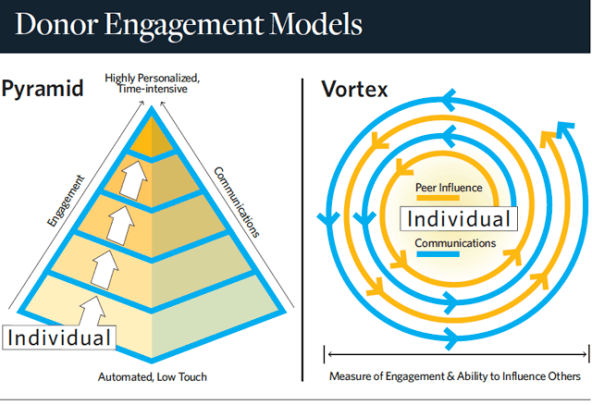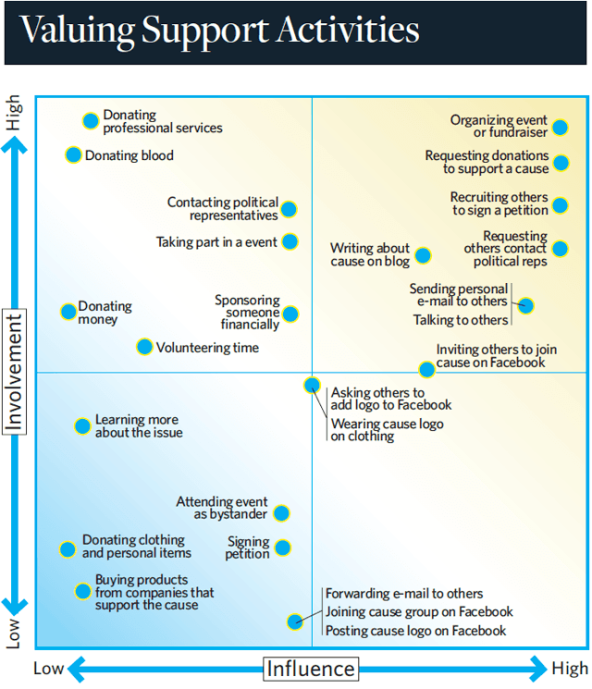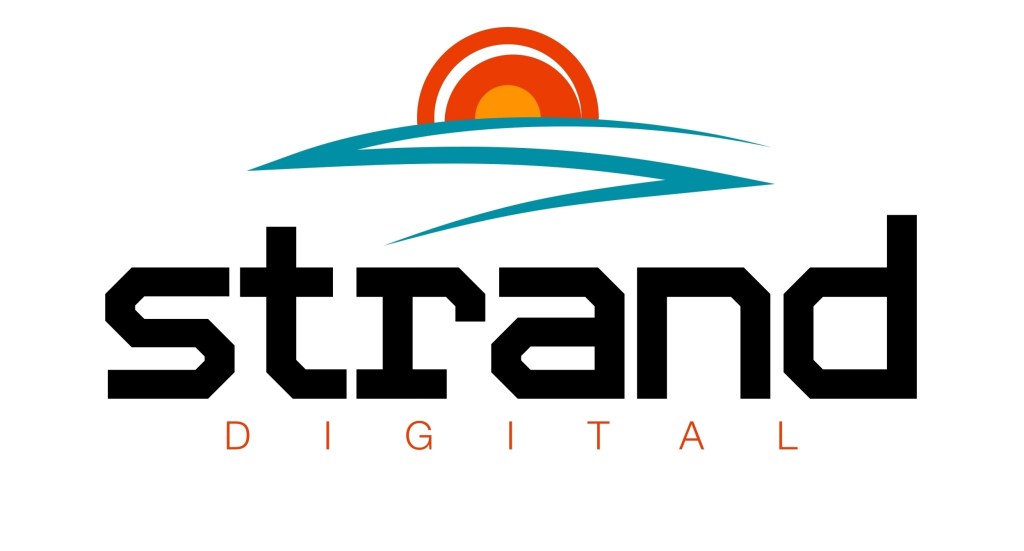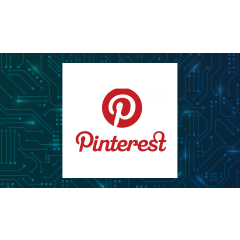(Illustration by Andrew Bannecker)
Spending an entire workday on Facebook isn’t part of a typical nonprofit employee’s job description. There are programs to run, decisions to make, funds to raise—all higher priorities than the online world of status updates, tweets, pins, and check-ins.
But for one day last fall, all of the people who work at For Love of Children (FLOC) spent all of their time on Facebook. At the end of the day, the organization was nearly $114,000 wealthier. As a participant in Give to the Max Day: Greater Washington, FLOC rallied its supporters to donate $87,000 during the one-day competition, earning it additional prize money from contest organizers for having raised the most donations. For FLOC, Give to the Max Day provided more than just much needed funds. It brought an influx of new donors—many of whom were first introduced to the organization by their friends using social media.
FLOC isn’t the only nonprofit taking advantage of social media to raise money, garner new supporters, and increase visibility. One of the most popular—and controversial—nonprofit campaigns of 2012, Invisible Children’s KONY 2012 video, was also fueled by social media. The video has been shared more than 2 billion times on Facebook and Twitter since it went live in March. The vast majority of the people watching the video had never heard of Joseph Kony before the campaign, and it’s unlikely that they will ever have contact with the organization again. But the impact the campaign had on public awareness of the issue was incalculable.
Until recently the models that nonprofits used to find, engage, and cultivate donors, volunteers, and other supporters were reasonably straightforward. The first step was to use direct mail, phone calls, or other techniques to bring in large numbers of potential supporters at a low level of engagement. These supporters were sorted into neat groups, and the most promising people were continually moved up the pyramid or ladder and cultivated for larger and larger donations. It was an orderly and linear process. Today, the Internet and social media have permanently disrupted the traditional donor-engagement process. Online competitions, viral video campaigns, mobile giving—with each new way for organizations and donors to interact come increasingly complex entry points into the traditional models of donor engagement, greater variation in movement along the pathway to deeper engagement, and more opportunities for a person to be influenced by forces outside an organization’s control.
To better understand the impact that social media is having on donor engagement, we conducted a nationwide research project. We learned that donor behavior and communications preferences have changed because of social media. And as a result, the traditional donor engagement models are no longer sufficient. In their place we need to create a new model of donor engagement, one that is more
fluid and continuous, and that better reflects the growing importance that a person’s influence (and how she uses it) plays in the process.
The Traditional Donor-Engagement Model
Pyramids, ladders, funnels—all have long been used as organizing devices and models in the donor-engagement process. Their beauty is in their simplicity; donors exist at a single level at a given point in time and progress predictably up the rungs or levels through carefully calculated outreach and engagement by the organization.
At each level, increasing efforts to engage a person result in increasing commitments (and a drop-off of people who will attain that next level). Those at the bottom are thought to be less engaged than those nearer to the top. People at different levels take different actions and donate in differing amounts; therefore, different communications tools are associated with the levels or rungs. Low-touch or automated tools like direct marketing are at the bottom, and more time- and labor-intensive tools like personal outreach are reserved for only the upper echelon.
The assumption of the traditional donor-engagement models is that the great majority of people enter at the bottom. There is an initial period of time during which the person gets to know the organization
and the organization gets to know the person. The organization may ask the person to get involved in some small way, like volunteering for or participating in an event, forwarding an e-mail to friends, or signing a petition. Then—and only then—will they make the “ask” for a small financial gift. This is followed by stewardship and deeper engagement, further research into the person’s capacity to give, and eventually, an ask for a larger monetary gift.
In theory, the cycle continues until the person reaches the top of the pyramid or ladder.1 With each subsequent cycle, forward (or upward) progress is made. A person can neither drop down to a lower level of engagement nor be in more than one level of engagement simultaneously. The culmination of this cultivation? Presenting a person with the perfect ask at the perfect time—with meticulous research informing just how much money to ask for and when.
Social Media’s Impact
The traditional pyramid and ladder models of donor engagement have persisted into the age of social media, as organizations try to make sense of how to use the new tools and what advantages—if any—they hold for fundraising. The consensus among development professionals is that the various types of social media have yet to be proven as effective, stand-alone fundraising tools; few direct asks are being made via these channels today. Yet these social media channels are the very ones that increasing numbers of people use to gather and process information today—young people in particular.
“Social media has created a dilemma around how we reach people,” says Shaun Keister, vice chancellor of development and alumni relations at the University of California, Davis. “We can’t solicit directly on social media—yet that’s where people are doing their business, it’s where they’re networking, it’s where they’re getting their information and making a lot of decisions in their lives.”
The approach many organizations have taken is to integrate social media into the traditional pyramid and ladder models—occupying the bottom rungs—and use it to build awareness and foster the beginnings of a relationship with the organization. Social media is not used as a way to engender or demonstrate real depth of commitment. “Liking” a cause on Facebook, blogging or tweeting about it, or adding an organization’s logo to a social profile are all thought to be gateway actions.
The goal is still to move the casual Twitter user up the ladder to become a legacy donor—but there is little understanding of the pathway this person will take and the best way to navigate the pathway using the new mix of online, offline, mobile, and social media tools. An even bigger question is whether social media is even the best use of a person’s or organization’s time and resources.
Despite the efforts to meld the old and the new, there is an inherent disconnect between the static pyramid and ladder models—even those updated with social media—and the dynamic ways in which people interact with causes today. That is why we need to create a new model of donor engagement. But first, it’s important to better understand the changes in how people engage with organizations and causes today.
New Types of Donor Behavior
To better understand the new world of donor engagement, Georgetown University’s Center for Social Impact Communication and Ogilvy Public Relations Worldwide partnered to conduct a quantitative study of Americans to learn how social media has changed the ways people interact with and support the causes and social issues they care about. The survey was conducted in late 2010 with a nationally representative sample of 2,000 people age 18 and older.
Although the results certainly don’t imply that organizations should abandon all traditional means of donor outreach and engagement in favor of Facebook, Twitter, and the like, they did reveal important insights into how the traditional models are falling short, both in their discrete categorization of donors and behaviors and in the ways that organizations communicate with their stakeholders.
Survey respondents reported an average of nearly five ways in which they first become involved with supporting causes. The top five ways are donating money (40 percent), talking to others about the cause (40 percent), learning more about the cause and its impact (37 percent), donating clothing or other items (30 percent), and signing a petition (27 percent). Entry points for engagement weren’t confined to a particular level or rung on a ladder, but rather reinforced our hypothesis that people enter at various levels—or even multiple levels—of engagement.
Interestingly, when asked in our survey about the ways in which they most often get involved with causes or social issues, the respondents’ answers look strikingly similar to how they first get involved. This alignment could be an indicator that people aren’t necessarily progressing up a ladder but instead tend to remain at the level(s) at which they are first engaged.
Social media-driven actions are conspicuously absent from the ways in which Americans first get involved with causes. This goes against the updated models that often classify these actions as the gateways at the bottom of the ladder. For example, only 9 percent of Americans first get involved by joining a cause group on an online social networking site like Facebook; other social media actions, like posting a cause’s logo on a social profile (6 percent of respondents), and blogging about a cause (4 percent) ranked even lower. These types of activities (and the people who perform them) are commonly lumped together under the heading of “slacktivists,” and the assumption is that they replace more traditional (and, from an organizational perspective, more valuable) forms of engagement like volunteering or donating.
Although this might be true if these were the only types of activities these people undertook, we found in our study that these slacktivists actually supplement—not replace—donating and volunteering with promoting the cause on social media. Moreover, they apparently perform these actions after already having been engaged with an organization. So for this group of people, it’s very likely that they first donated or volunteered, and then progressed down the ladder, so to speak to engage with the organization on social media.
There is very little room in the traditional models for this type of backward motion. In fact, organizations looking to the traditional models may actually think of this downward movement as a bad thing—as if these people are somehow less engaged because they are using social media now.
In practice, it turns out, a person’s engagement with an organization is generally more continuous—and messy. It doesn’t stop and start with discrete levels, and with the broad range of activities available to
potential supporters today, it’s actually preferable for people to be engaged on multiple levels.
Communication Changes Too
In the same way that the traditional models don’t fully represent donor behavior today, they also promulgate a somewhat limited and outdated view of how organizations should communicate with donors. The models encourage the segmentation of communications tactics—social media, e-newsletters, and other automated channels at the bottom, and personal outreach, face-to-face meetings, and other labor-intensive, high-touch channels at the top. In practice, segmented communications strategies are quickly losing ground in a world in which the boundaries between offline and online, traditional and nontraditional media are blurring.
Our survey results showed that traditional media (such as television, newspapers, and magazines) are still the way that most Americans learn about causes and social issues (70 percent of respondents agreed that they learn about causes from these sources). But social media and online channels have sizable audiences as well (47 percent of respondents agreed that they learn about causes from these sources).
The most successful organizations are those that embrace communications strategies that integrate online and offline channels. It’s about creating what Jennifer Wayman, executive vice president and director of social marketing at Ogilvy Washington, calls a “surround sound” experience—one that uses various channels in people’s everyday lives and increases opportunities to both introduce and reinforce messages.
It is also important that organizations use new forms of media to communicate continuously. Direct mail or even e-newsletters can be valuable conduits of information for organizations, but the power of social media is its ability to provide continuous and timely communications.
The traditional models also fall short because they are inherently one way—from the organization to the person. A person’s commitment to an organization can depend on many factors that are outside the control of the organization. A donor’s peers can greatly influence her actions and deepen her commitment. Likewise, a donor can have great influence on her peers. Our survey results highlighted the role of influence in driving involvement in causes; 39 percent of Americans responded that they’re motivated to get involved with causes that have affected someone they know, and 36 percent said they’re motivated by it being an important cause to family and friends. Both were among the top five responses, and both outweighed factors like having the time or money to get involved or feeling an urgency to help those in need.
“Organizations need to recognize that they are not their best messengers anymore,” says Katya Andresen, chief strategy officer at Network for Good. “When you rank the potential forces on a donor’s decision to give, family, friends, and peers rank higher than anything.” Fundraising professionals and organizations accustomed to operating according to one-dimensional models that do not account for the variable nature of peer-to-peer influence are at a significant disadvantage.
Creating a New Model
Given what we know about the shortcomings of the traditional donor-engagement models, it is possible to begin to construct the outlines of a new model that takes into account the changes in donor behavior, communications, and influence. The new model should incorporate the following characteristics of donor engagement:
- Allows for a donor to be engaged at different entry points and to move easily between them during the life cycle of his engagement
- Has no fixed end point for a donor’s engagement
- Allows for the donor-engagement footprint to expand or contract in ways that are unique to and driven by the individual donor
- Places the donor’s needs—not the organization’s—at the center of the engagement
- Accounts for the influence of other people on the strength of the donor-organization relationship
The best visual representation of this new model is a vortex, rather than a pyramid, ladder, or funnel, which are used to represent the traditional models. (See “Donor Engagement Models,” below.) At the center of the vortex is the individual. Her depth of commitment to the organization (formerly how high up she is on the ladder) is represented by the size of the continuous field around the center. As the person’s commitment deepens, the vortex expands outward. The vortex can be strengthened—and expanded—by the influence of others, but as it grows it also becomes a greater source of influence on others.

In a vortex there are no discrete steps upward or downward or levels to progress, but rather a continuous flow of communication and engagement that begets further communication and engagement. And there is a noteworthy absence of a fixed goal (the equivalent of the pinnacle of the pyramid), recognizing that there is more than one route to maximizing a person’s support of a cause or issue.
Adopting a model such as this requires organizations to change the way they think about their donors and potential donors, and how they both assign value to and ask for contributions from these groups. It also requires organizations to change the ways in which they train and empower all their employees to engage with their stakeholders.
Redefining Contributions
The first change that an organization needs to make is in how it defines a person’s contribution to the organization. Although the pyramid and ladder models tend to emphasize a singular call to action (donate money), a vortex model allows other types of contributions from supporters to be valued.
“I think increasingly philanthropists—whether individual, corporate, or private—are looking at a cause and asking the question: what is the best way to get a result?” says Susan Raymond, executive vice president for research, evaluation, and strategic planning at Changing Our World. “And it may not be writing a check, and it may not be volunteering. It may be other forms of resource mobilization.”
Survey respondents were asked what makes them feel like “cause champions”—defined as being very involved in a cause or social issue. Donating was the top response (33 percent), followed by talking to others about the cause (26 percent) and volunteering (22 percent). A majority of respondents (57 percent) chose offline activities, with only a small minority choosing online activities (19 percent) or social networking (10 percent).
Among the 10 percent of Americans who said that a social media activity made them feel like a cause champion, the list of top responses looks quite different from the majority of Americans.’ Talking to others about the organization or cause tops the list (49 percent), followed by joining a cause group on Facebook (43 percent), donating (39 percent), asking someone else to add a cause logo to a social profile (37 percent), and signing a petition (35 percent).
As you can see from the survey data, when organizations emphasize financial donations as the primary means of support, they may be doing so at the risk of discouraging other types of supportive activities—many of which have the ability to expand significantly the influence of the person at the center of the vortex, and therefore increase the contributions of others.
There is a parallel shift occurring in the for-profit sector, as more and more consumers turn to social media and online channels to talk about and share their experiences with products and services. As Paul Smith and Ze Zook wrote in their book Marketing Communications, “the ideal customer, or most valuable customer, does not have to be someone who buys a lot. The ideal customer could be an influencer who is a small irregular buyer but who posts ratings and reviews, as the reviews could influence another 100 buyers.”2
For a nonprofit, this valued supporter could be the small donor—with the big network or degree of social platform savvy—who is able to influence others to give well beyond her own capacity. Where the traditional models might write this person off as having a low lifetime value and not worth an organization’s time and investment, a model that takes influence into account will value that person more highly.
The whole concept of lifetime value would be reimagined in a vortex model. Where lifetime value has traditionally been a combination of average donations, future capacity to give, and attrition rates, now lifetime value could incorporate factors like the size of the person’s network, her propensity to share and influence that network, and her skill in doing so.
Diversifying Calls to Action
Once an organization begins to define and value contributions differently, it can begin to diversify the types of calls to action it asks of its supporters. As our research shows, organizations basically get what they ask for. Ask only for financial donations, and that is what people will think is their deepest level of involvement. But ask for more—sharing on social media, forwarding e-mails to friends, advocating for the organization, organizing and leading fundraising events—and a person’s contributions, as well as her sense of having an impact, can grow exponentially.
It’s no coincidence that the two most successful organizations on Give to the Max Day: Greater Washington, FLOC and Little Lights Urban Ministries (which raised $79,000 in donations and prize money that day) used nearly identical calls to action in their donor communications. In addition to donating, each organization asked supporters to share the e-mail appeals with their personal networks and to post information about the organizations’ efforts in the contest on social media. Both are relatively easy tasks that require minimal effort, but can reap tremendous benefits for an organization.
In our research we found that Americans do recognize the value of social media tools in facilitating increased cause engagement; more than half of those surveyed agreed that online social networking sites allow people to support causes more easily. And as we saw in the earlier data, slacktivists who are willing to use digital tools to promote an organization or cause are a desirable group to have. They are just as likely to donate as non-social media promoters, are twice as likely to volunteer or participate in an event or walk, and are more than three times as likely to solicit donations on behalf of a cause. They also participate in, on average, nearly twice as many different kinds of support activities as the average American.
Because there are so many different activities that people can be involved with, organizations need to be strategic about what they ask supporters to participate in. To better understand the relative importance of different types of activities, we categorized them in two dimensions: level of involvement (how much of a personal investment in time, resources, and reputation a person makes), and level of influence (how likely it is that completing that activity alone will sway someone else to get involved).
Donating money, for example, has a relatively high level of involvement (assuming a reasonably substantial contribution), but a low level of influence (if a person donates, but tells no one, it doesn’t compel anyone else to take action). Forwarding an e-mail to friends about a cause has the potential to influence other people to get involved, giving it a high influence value, but a lower value for involvement because it’s a relatively easy task. (See “Valuing Support Activities,” below.)

There is a noticeable lack of activities that fall into the low involvement, high influence quadrant, because for an activity to be influential, it needs to be grounded in authenticity and personal commitment. A person can be involved but not influential, but can never be influential without being involved.
The goal for an organization using the vortex model is to offer its supporters a tailored portfolio of involvement that speaks to their strengths and ability to have an impact. This in turn will maximize the person’s commitment and lifetime value, and strengthen the core of the vortex and its ability to influence others. What was a model designed to prepare each individual donor for the annual ask now becomes a continuous conversation in which varied engagement opportunities can be presented throughout the life cycle of the donor.
Sustaining Continuous Communication
Being in continuous communication with donors can seem quite daunting because of the amount of time required. The way to do this is to encourage everyone in the organization to be a communicator. Most organizations equip board members with basic elevator speeches. Some may hold trainings for board and staff to provide guidelines on messaging. But very few embrace the “everyone is a communicator” idea fully—and those that do have a tremendous advantage.
“Give to the Max really highlighted the importance of everyone in-house being an ambassador for your organization,” says Andrea Messina, director of development at FLOC. “We have communications trainings for staff—everyone learns what messages are and what our elevator speech is.” FLOC provides all staff with guidelines on how to tell the FLOC story to different audiences, in one sentence and in one page. Each staff meeting ends with a specific call to action so that people are aware of what’s going on at the entire organization, not just within the confines of their job.
Communications can also be carried on by an organization’s supporters. An organization that does this well is charity:water, which has had tremendous success in mobilizing its online supporters to raise funds to provide safe drinking water to people in the developing world. “The reason it comes to them very naturally is that the organization is founded on the very principle of being a network of networks,” says Andresen. “It is set up to turn the role of fundraiser from an internal function of the organization to a role that’s shared by everyone in their community.”
For organizations that don’t come by this networked mentality easily, online supporters can be identified, trained, and managed like any group of volunteers. FLOC monitors social media to find potential
ambassadors. “I can spend a few minutes on Facebook every day and see people who are posting and liking every time,” Messina says. These are the people whom FLOC recruits to be online ambassadors.
What causes most organizations to hesitate in empowering these external ambassadors is the loss of control. “There’s a certain amount of the ‘they’re not going to say it the way we’re going to say it’ mentality, but the cost-benefit ratio is still going to be positive,” says Mark Rovner, founder and principal at Sea Change Strategies. And perhaps with the loss of some control comes an increase in authenticity and transparency, both qualities that can greatly enhance an organization’s overall communications.
Looking Ahead
Our hypothesis going into the study was that social media has revolutionized the ways in which people get involved with causes. In short, it hasn’t. But it has certainly changed the ways in which people can influence others and increased the range of meaningful calls to action available to nonprofits. Continuous communication is now an expectation—if not a demand.
The full impact of these changes on the traditional donor engagement models is not yet known. It’s clear, however, that new ways of thinking about donor behavior should incorporate measures of influence
and better account for the fluid and dynamic ways in which people support causes. Even as our understanding of true influence continues to evolve, organizations can begin to respond to these shifts by rethinking their definition of a traditional contribution and diversifying their calls to action.
“People are going to take very different approaches to solving problems as this whole area of social engagement evolves,” says Raymond. “There will be people who will never be on anybody’s pyramid or ladder … and they’re equally valuable in the sector, equally valuable as leaders—they just come with entirely different sets of optics.”
The challenge for organizations is finding ways to maximize the contributions of different groups of people with unique desires and resources. One thing is for certain. The pathway into the digital future is not going to be a linear journey up a ladder or pyramid.
Support SSIR’s coverage of cross-sector solutions to global challenges.
Help us further the reach of innovative ideas. Donate today.
Read more stories by Julie Dixon & Denise Keyes.





